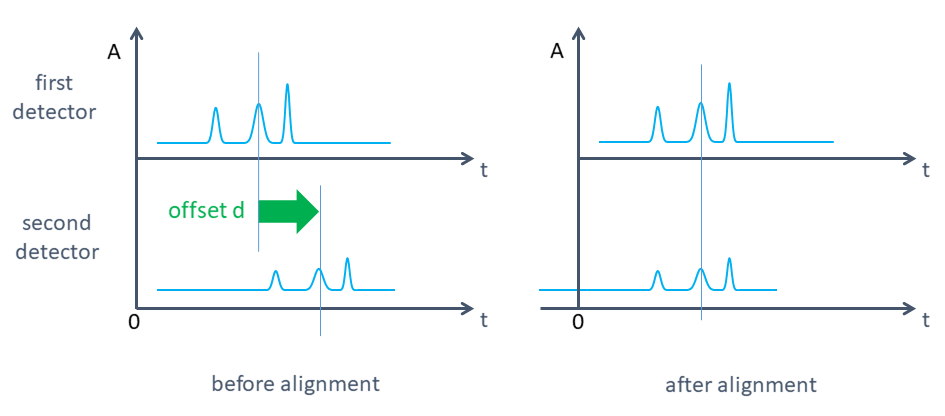Offset between multiple detectors
As in a one-dimensional measurement, the offset between two detectors creates a signal offset. This applies to the first as well as to the second dimension.
To achieve the same retention time for the same compound showing up in multiple detectors, these signals must be aligned by shifting the chromatograms of second and further detectors to the left. This means that retention times are always defined for the first detector in the flow path in either dimension. The offset is the difference between the detector transfer times, for example, d1 = t1,1 - t1,2 (see 2D-LC flow path).

The figure above applies to both ¹D signals and full ²D signals. As the signal of the second detector is shifted left, the signal of the second detector starts with a corresponding negative time. In 2D-LC, this is visible only for the full ²D, which is shown in the Diagnostic Signals window. Individual cuts always start at the first ²D detector delay and end after the cut length time.
base-id: 10237494027
id: 10237494027